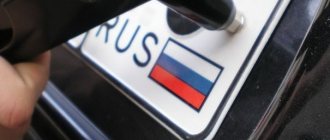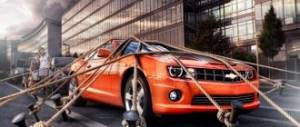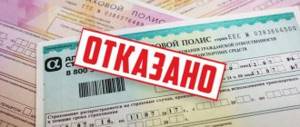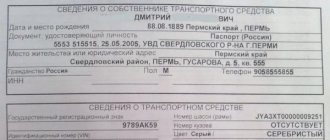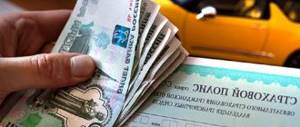Road accidents are not uncommon today and happen every day, so many are interested in the procedure for recovering damages from the culprit of the accident. Although under current insurance policies the insurer undertakes to reimburse the expenses incurred, in reality this rarely happens.
Because the company is trying in every possible way to find a reason not to pay anything. In such a situation, covering the costs by the real culprit of the incident is most fair and is supported by the position of the legislator. The article will tell you how to get funds, illustrate real situations from judicial practice and other important nuances that you should pay attention to.
Covering damage is the insurer's obligation
Reimbursement of the finances necessary for the restoration of both the vehicle and the victim after an accident is entrusted to the insurance company that issued the compulsory motor liability insurance policy to the person responsible for the accident.
The amounts of compensation in accordance with Article 7 of Federal Law No. 40 “On Compulsory Civil Liability Insurance” are quite limited:
- Up to 500 thousand for physical harm - damage, injury, death.
- Up to 400 thousand according to the property factor.
However, it is sometimes difficult to obtain these amounts from the insurer. As a rule, the reasons for refusal are:
- the driver at fault was drunk at the time of the accident;
- not having a driver's license with you;
- the commission of an accident during a period not specified in the insurance document;
- when the accident occurred, you did not have the insurance policy with you;
- expiration of the institution's license.
The listed factors are not considered legal. In the first two situations, the company reimburses the costs and subsequently has the right to go to court with a counterclaim against the culprit. If the document is not available at the time of the incident, the necessary information is subsequently established and payment is made. Upon expiration of the permission for the organization to carry out its activities, all claims are accepted by the RSA (Union of Automobile Insurers).
In a car accident, the burden of compensation falls on the driver in the following circumstances:
- The amount of the amount exceeds the established limit (then the refund is made according to the amount of the difference).
- The damage was not caused while moving (unsuccessful opening of the door while parked).
- Moral damage to injured participants.
- Lack of insurance (many people really neglect the established rule. Thus, court decisions in 2021 without compulsory motor liability insurance once again prove the unprofitability of not having a policy at all. Isaeva A. filed a petition with the court for reimbursement of the expenses she had incurred from the culprit of the car accident, Novikov. In 2021 at 17.00 an accident occurred on the M4 highway - a Ford crashed into another foreign car. An examination was carried out on the fact and it was established that, taking into account wear and tear, material costs would amount to 200 thousand rubles, but the plaintiff in her application asked for compensation without taking into account wear and tear. The court ruled that Novikov was guilty of commission of the act and will be punished in the form of a refund to the applicant based on the costs of restoring the car, paying an expert, as well as legal costs.
Forms of Refund
We found out that insurance payments under compulsory motor liability insurance in 2021 in case of an accident are made in only two popular forms: in cash or by repairing a mutilated vehicle at the expense of the insurance company. But which of the options for executing compensation is beneficial for the injured motorist, and how you can get money in your hands, we will learn from the article below.
Money
If a citizen owns a policy drawn up before April 28, 2017, then he has the right to demand cash payment under compulsory motor liability insurance from insurers under any circumstances. Other drivers may qualify for a similar compensation option only under certain conditions:
- The cost of restoration work after an accident exceeds the established insurance limit by more than 100,000 rubles;
- During the traffic accident, not only material damage was caused, but also moral damage;
- The insurance company does not have accredited experts to evaluate damaged vehicles;
- The person injured in the accident has a disability of the first or second category;
- The insurance company cannot repair the car within 30 days from the date of receiving the application from the client;
- After the company issued an unsatisfactory verdict, the victim filed a complaint with the RSA with a request to reconsider the case (if the Russian Union of Insurers approves the driver’s application after restoration work, the company providing civil liability protection will be able to demand recourse from the motorist).
Under other circumstances, the car owner will qualify for repairs of the damaged vehicle at the expense of the insurance company. But if the amount of compensation paid to the injured person is not enough, then he reserves the right to enter into subrogation in relation to the culprit of the accident.
Repair
If it is not possible to receive a cash payment under compulsory motor liability insurance, a citizen should know that vehicle repairs at the expense of the insurance company must also be carried out in accordance with established rules.
Namely:
- Movable property under 2 years old should be restored only by authorized dealers;
- The service station selected by the insurance company cannot be located more than 50 km from the place of residence of the car owner;
- The insurer is given no more than 30 days to fulfill this type of compensation, after which a daily penalty in the amount of 0.5% of the total amount of damage will be written off;
- When calculating the cost of repair work, wear and tear of vehicle parts is not taken into account;
- When contacting an accredited service station, the insurance company is obliged to guarantee the motorist the purchase of new parts for his vehicle;
- If defects are discovered after the vehicle has been restored at the expense of the insurance company, the car owner can file a lawsuit against the enforcement office, receiving moral compensation for this (in this situation, the insurer will also be fined);
- Upon completion of the repair, SK provides a 6-month guarantee on all types of work performed, except for body painting.
Advice! If any of the listed rules are not followed, the victim reserves the right to file a complaint with the RSA to review the initial decision of the Investigative Committee. This way, the accident victim will be able to claim a cash settlement regardless of the amount of damage received.
What can be recovered
When filing a statement of claim or drawing up the text of a settlement agreement, you need to be extremely careful when working out the “requirements” clause. For example, as judicial practice shows, requests are not satisfied without taking into account the wear and tear of the vehicle. Because in this case, the owner seeks not only to return the funds spent on repairs due to an accident, but also to completely restore the car at someone else’s expense (to repair faults that prevent comfortable use even before the accident). This position of the owner is not welcome.
From the guilty individual, the victim has the right to receive:
- compensation for repair costs taking into account wear and tear (until recently, court decisions without wear and tear of OSAGO had a negative trend. However, the Constitutional Court clarified that the difference between the amount paid by the insurer will be paid independently by the culprit. In fact, most of the costs will have to be compensated by the defendants);
- costs for towing and car storage;
- loss of the commodity price of the vehicle. The calculation is made if the period of use of the machine is less than 5 years, the estimated wear and tear does not exceed 35%;
- moral damage in the event of physical and moral suffering of the victim (regulated by Article 1100 of the Civil Code of the Russian Federation. It is assumed regardless of the presence of culpable motives on the part of the perpetrator, but upon the fact of infliction by a source of increased danger, which, according to the provisions of Article 1079 of the Code, includes vehicles);
- compensation of wages for the entire period of time during which a person is unable to work;
- expenses for a representative in court, postage, examination and others.
If damage is caused to a person’s health, an extract from the medical record and a medical examination report determining the severity of the damage caused must be provided as evidence. In addition, you should provide documents indicating expenses - prescriptions, payment receipts from the pharmacy, etc.
What can be considered damage in a road accident?
Damage is the harm caused by the unlawful action or inaction of one person in relation to another. In the case of an accident, it can be of either a property or non-property nature:
- costs of replacing or repairing lost/damaged property due to an emergency;
- damage or loss of a vehicle, valuable cargo or belongings;
- causing harm to the health of the victim;
- moral damage;
- causing damage to reputation, honor;
- court expenses.
Compensation by agreement of the parties
It is better to return funds for restoration by mutual agreement and good will, which happens extremely rarely, especially when it comes to large amounts of payments.
Before contacting the culprit, the individual undertakes to follow the following algorithm of actions:
- Have the necessary documents from the traffic police on hand.
- Visit the insurer (receive an amount of compensation that is clearly less than the actual amount of expenses or even hear an official refusal).
- Conduct an independent examination.
- And only at this stage start conversations with the other side.
The start of negotiations should be considered the submission of a claim with the following content:
- information about the culprit of the car accident;
- information about what happened;
- information about the damaged vehicle;
- results of the examination;
- the total amount of damage caused;
- the amount of payments transferred by the insurance company;
- the difference between the insurance premium and the actual damage;
- amount of payment from the culprit;
- contacts of the applicant for dialogue (address, telephone, e-mail).
IMPORTANT !!! When drawing up a document, you need to indicate in it a reasonable period for the return of funds, as well as the expected form of payment - in person in cash against a receipt or by bank transfer to the specified details.
All duplicates of documentation should be attached to the claim letter for the other party to review, namely:
- Act on the occurrence of an insured event.
- Resolution on the case of an administrative offense from the traffic police.
- Notice with a call for inspection.
- Expert opinion.
- Checks, receipts, service agreements.
It is recommended that the claim and paper support be sent by a valuable letter with a list of the attachments, as well as with a return receipt (which is subsequently attached in the event of litigation to other documents). You should also remember such important points as: no wear, compulsory insurance, court decisions.
Filing a claim in court
Appealing to the court for protection of violated interests is the last possible way out of the situation, since it will require considerable time, material costs, patience and nerves from the participants. It's better to conclude an agreement.
The application to the court is submitted at the place of residence of the offending individual and a state fee must be paid, based on the size of the claims. The amount of moral damage is not included in the scope, since it is established during the process by the minister of justice.
The case can be resolved in a magistrate's court if the amount of the claim does not exceed 50 thousand rubles. In other cases, the first instance will be the district judicial authority.
ATTENTION !!! It is important to remember that the preliminary conclusion of a settlement agreement does not deprive the prerogative of going to court. If some payments to the perpetrators have already been made, then it is in his own interests to attend the meeting and present receipts or statements of the bank transfer made in favor of the injured party. The servant of Themis will take into account the amounts already returned and may have to pay in a smaller amount.
Thus, if it is not possible to recover funds from the insurance company for one reason or another, or a small amount was subject to return, then the rest will be paid by the person responsible for the accident. However, the victim will have to spend a lot of money initially if they cannot reach an agreement peacefully and are forced to go to court.
How to obtain compensation for damage?
If the court makes a decision in favor of the victim, and the culprit stubbornly refuses to pay, arguing that the required amount is not available, the victim can take measures to still achieve compensation for the harm. It should be remembered that in this situation it would be useful to contact a lawyer who has experience in solving such problems.
As a rule, you can determine how solvent the culprit is by looking at his place of residence and the cost of housing in the area. You can pay attention to his habits and lifestyle: an expensive hobby (for example, collecting paintings) is unlikely to be afforded by an insolvent citizen.
The place of work of the culprit (and its presence in general) can also say a lot about his financial capabilities. You can obtain reliable information regarding a citizen’s employment by making a corresponding request to the tax office. If the victim's lawyer comes to visit the culprit at work, this can have an extremely negative impact on the latter's reputation. This means that the citizen, with a high degree of probability, will try to prevent such a scenario.
A serious reason for compensation for damage may be the imposition of a ban on leaving the country, refusal to provide loans and other banking services.


